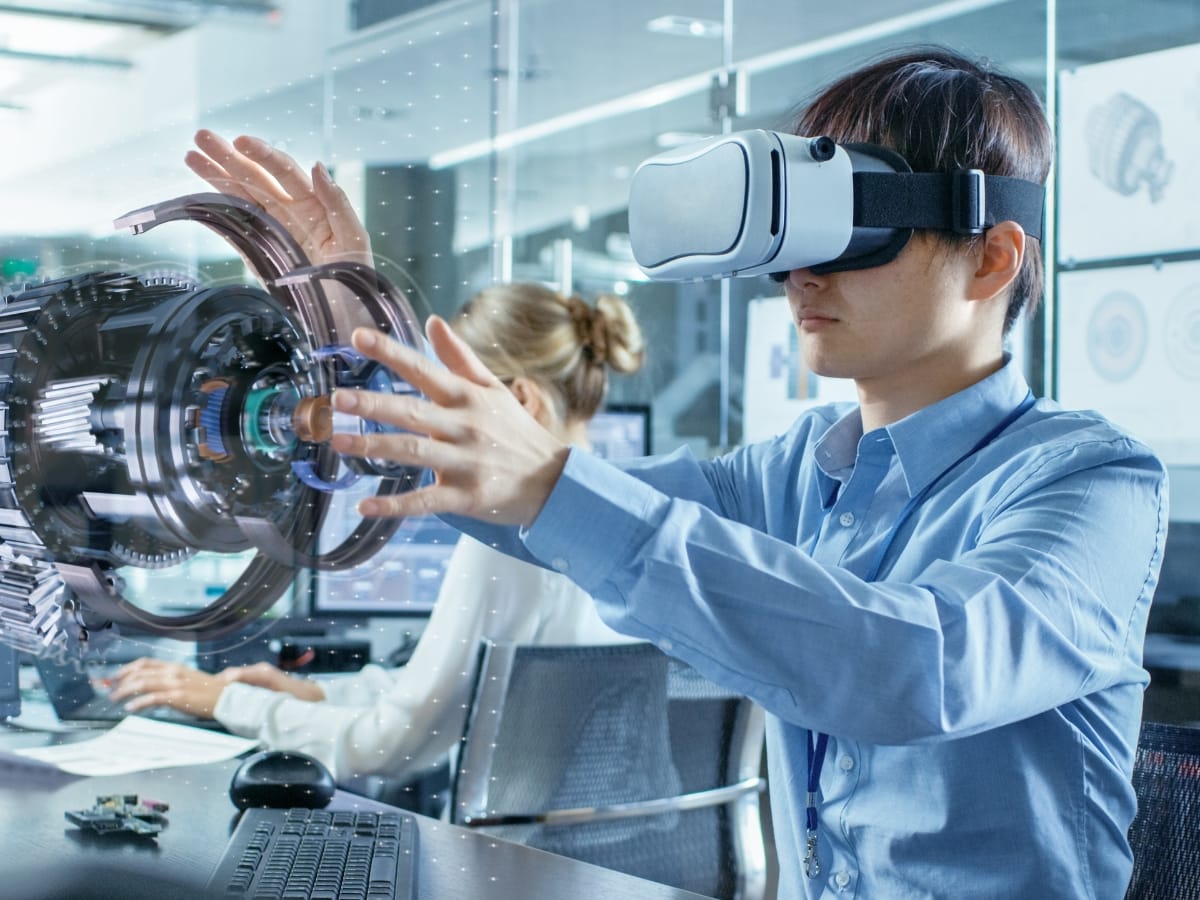Augmented Reality (AR) is rapidly changing the way brands engage with consumers, blending digital experiences with the real world to create interactive, immersive marketing campaigns. From virtual try-ons to dynamic product demos, AR has already proven its power to capture attention and drive conversions. But as technology continues to evolve, marketers are asking: what’s next? In this article, we’ll explore the emerging trends, innovations, and future possibilities of AR in marketing—offering a glimpse into how this cutting-edge tool is set to redefine customer engagement and brand storytelling in the years ahead.
Augmented Reality in Marketing: What’s Next for Brand Engagement?
The Evolution of Augmented Reality in Marketing Strategies
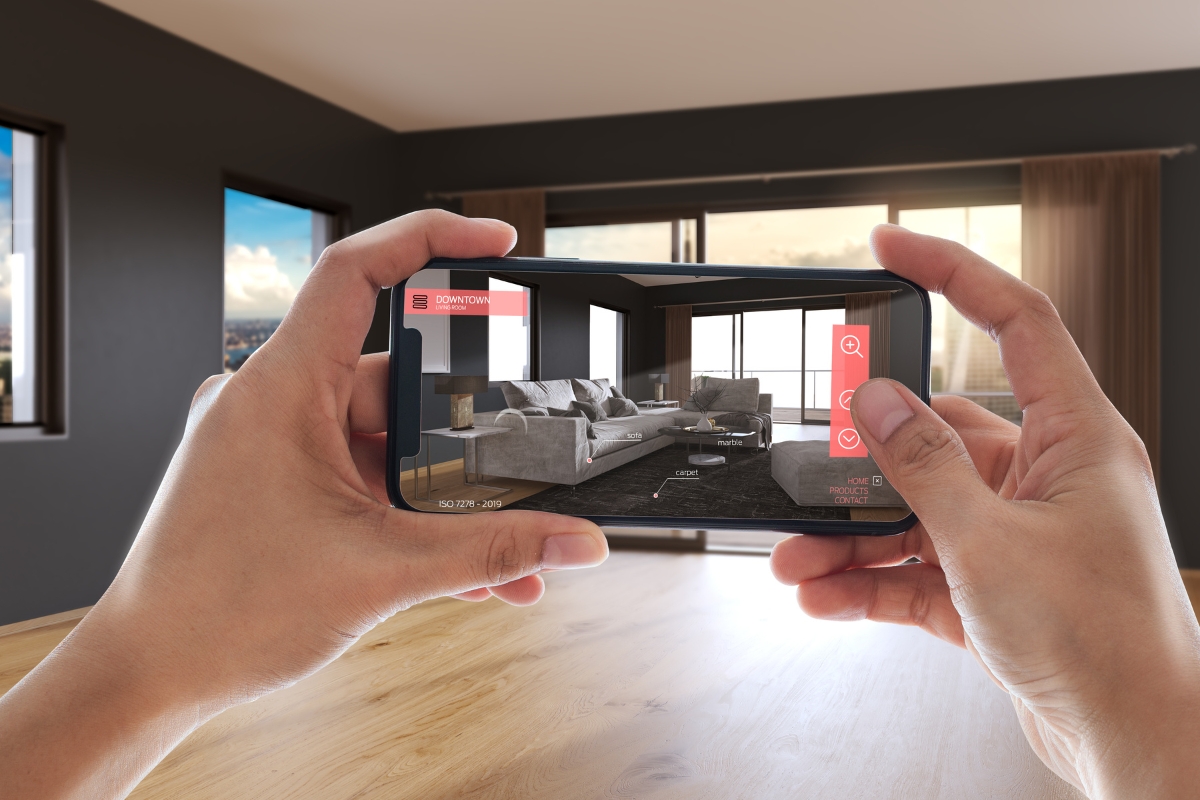
Augmented reality (AR) has moved beyond novelty and is now a key tool for engaging audiences. By merging digital elements with real-world environments, AR adds an interactive layer to marketing campaigns. Early adopters used it for basic overlays, but today’s brands integrate AR with web platforms, analytics, and SEO to create immersive experiences. This technology works alongside tools like automated marketing, content creation, email campaigns, and targeted advertising. When combined with strong technical SEO and sales funnel strategies, AR also supports deeper online engagement, reputation building, and optimized performance.
Projecting Future Augmented Reality Integration in Campaigns
Instead of being a gimmick, AR now holds strategic marketing value. Brands use it to:
- Showcase products in context, such as virtual try-ons for clothing or accessories
- Provide interactive demos that invite exploration
- Create memorable experiences that link back to their website or app
These AR features aren’t standalone. They integrate with SEO-driven blog content, social media campaigns, reputational efforts, and analytics. For example, when a user tries on virtual glasses in AR, they can be guided to an email signup or linked to a blog post explaining frame materials.
Current Trends in AR Marketing
AR is becoming more accessible and versatile, fitting within broader digital strategies:
- Product previews let users test virtual versions via smartphone or laptop
- Interactive brand moments enhance storytelling and boost memorability
- Data-driven personalization adapts AR visuals and messaging based on user preferences and behavior
- Marketing automation streamlines follow-ups once a user interacts with AR—whether through targeted ads, SEO content, or email campaigns
With AR, brands can offer real-time content that responds to user choices, making campaigns more engaging than static text or images.
Consumer Impact and Engagement
AR raises the bar for personalized customer experiences. Shoppers can view how furniture fits in their homes or how makeup looks on their face virtually. This interactive, real-world preview drives stronger conversions and improves customer satisfaction. AR experiences—such as a virtual showroom visit or product demo—also build trust, encouraging repeat interactions and strengthening brand loyalty.
The Future of AR in Advertising
AR in advertising is evolving fast. We’ll see more:
- Interactive overlays with data-rich visuals (ratings, specs)
- Branded mini-games and gamified experiences that users can share
- AR-enhanced social media filters that link directly to in-app promotions
These experiences will tie into automation, SEO, analytics, and funnel strategies so brands can track engagement and refine content in real time.
Consumer Impact and Engagement
AR raises the bar for personalized customer experiences. Shoppers can view how furniture fits in their homes or how makeup looks on their face virtually. This interactive, real-world preview drives stronger conversions and improves customer satisfaction. AR experiences—such as a virtual showroom visit or product demo—also build trust, encouraging repeat interactions and strengthening brand loyalty.
The Future of AR in Advertising
AR in advertising is evolving fast. We’ll see more:
- Interactive overlays with data-rich visuals (ratings, specs)
- Branded mini-games and gamified experiences that users can share
- AR-enhanced social media filters that link directly to in-app promotions
These experiences will tie into automation, SEO, analytics, and funnel strategies so brands can track engagement and refine content in real time.
AR as a Storytelling Tool
AR transforms passive ads into immersive narratives. For example, a heritage brand could use AR markers at historical sites to display archival images or audio narration. These on-location digital layers, paired with robust content and website experiences, create a richer brand story that unfolds dynamically.
Preparing for Widespread AR Adoption
Brands looking to stay ahead should:
- Invest in the right tech and staff training
- Integrate AR elements with web platforms, SEO, and analytics
- Align AR design with existing brand identity and content workflows
- Partner AR campaigns with email, paid media, and funnel optimization
Early adopters—those combining AR with smart content, data, tech, and SEO—stand to lead the market and connect more deeply with increasingly tech-savvy consumers.
Emerging Augmented Reality Technologies and Their Marketing Potential
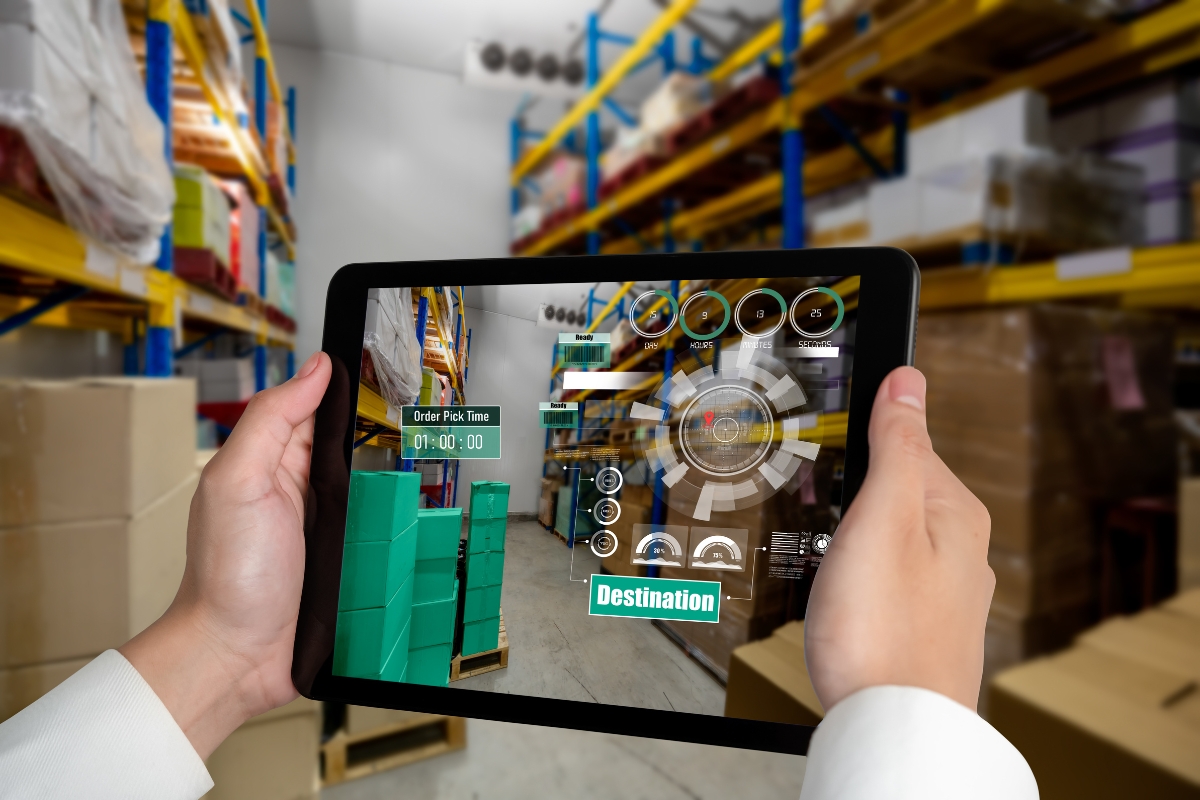
Breakthroughs in AR hardware and software are redefining immersive content delivery. Enhanced display technology, spatial sensors, and AI tools now allow for dynamic, context-aware marketing. These advances pair well with established digital strategies—content writing, email marketing, marketing automation, web design, SEO, and reputation management—to support both interactive campaigns and proven sales funnel frameworks.
Breakthroughs in AR Hardware and Software for Marketers
Lightweight AR smart glasses, sharper smartphone displays, and depth-sensing cameras have made immersive AR practical and accessible. Improved processing power combined with gesture recognition and face-tracking software enables marketers to build interactive content faster. These advancements dovetail with website and SEO strategies, helping brands deploy engaging AR demos that drive traffic and viral sharing. Development platforms now include AR support, allowing brands to test ideas quickly and scale them on existing digital infrastructure.
The Impact of 5G on Augmented Reality Marketing Capabilities
5G networks unlock AR’s real-time potential through fast data transfer and low latency. Mobile users can now experience high-resolution AR content on the fly, making interactive ads and location-based experiences feel seamless. Integrating these AR components with marketing automation, paid advertising, and email campaigns helps brands track engagement in real time. The result is a responsive system where AR content adapts based on viewer actions, supported by robust web infrastructure and updated technical SEO for optimal performance.
WebAR and Its Future for App-Less Augmented Reality Experiences
WebAR brings AR directly into browsers, removing the need for downloads and reducing friction in user experience. Brands can embed AR demos on web pages and social feeds, expanding reach far beyond native app users. This approach aligns with free marketing strategies that rely on strong SEO, responsive design, and link-building efforts. WebAR can showcase product interactions in place, driving conversions while supporting broader digital marketing ecosystems.
Wearable Augmented Reality Devices in Upcoming Marketing
Smart glasses and headsets are paving the way for hands-free, real-world AR. These wearables overlay information in physical environments, offering guided retail tours, interactive museum experiences, and on-site product demonstrations. Connected to backend systems, they support live data feeds and analytics. When aligned with content writing, logo design, and website strategy, wearable AR becomes a powerful branding tool that bridges digital and physical experiences.
AI’s Growing Influence on Augmented Reality Personalization
AI engines analyze user behavior, location, and past interactions to deliver personalized AR content. Imagine a customer walking through a store and seeing product suggestions tailored to their past behavior. AI-driven overlays can adjust visuals, offers, and messaging in real time. This personalization supports email campaigns, loyalty programs, and retargeting efforts—while automated tracking lets marketers fine-tune conversion funnels based on actual engagement.
Next-Generation Augmented Reality Applications for Customer Engagement
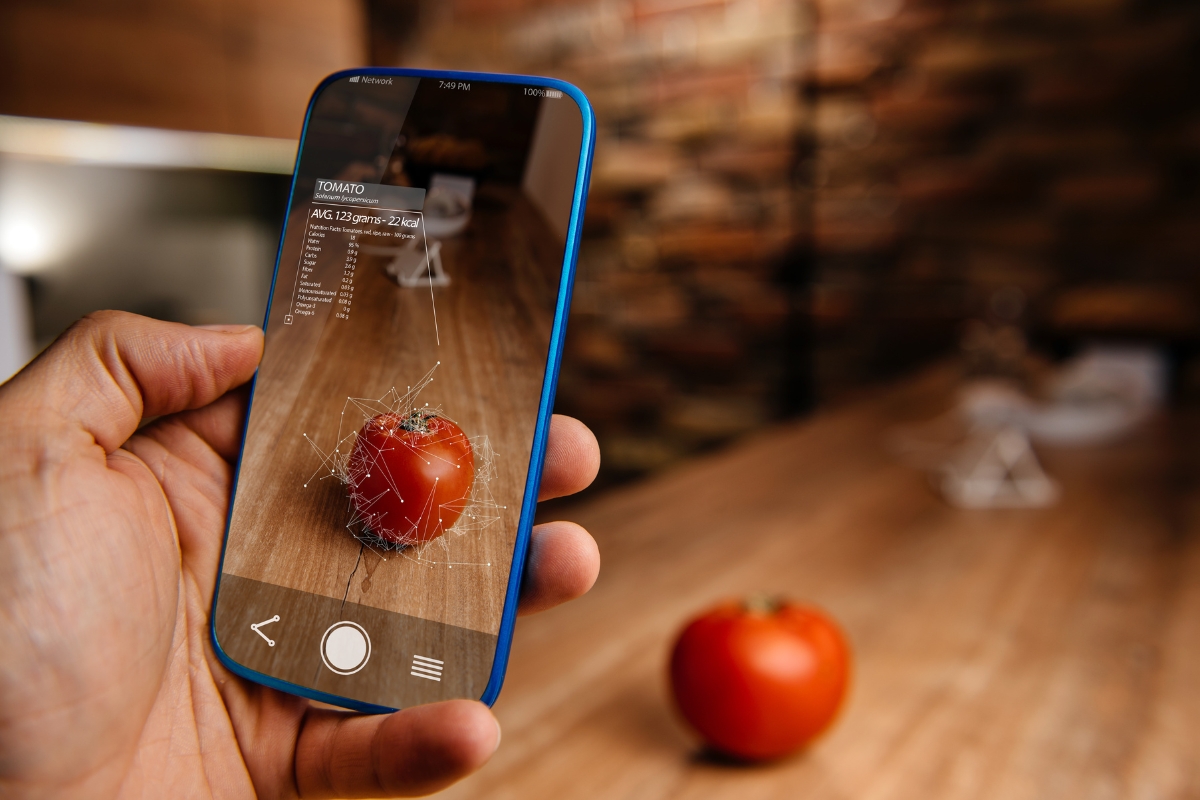
Augmented reality is quickly becoming a central tool for engaging customers through interactive and immersive digital experiences. These applications go beyond visual novelty to offer dynamic, personalized touchpoints that respond to user behavior and needs in real time. The future of AR in marketing lies in how well it can merge with a brand’s digital presence and create value across the entire customer journey.
Future Interactive Product Visualization With Augmented Reality
One of the most promising uses of AR is letting customers interact with products in 3D before purchasing. People can view furniture in their living rooms, try on clothing virtually, or explore the inside of a car from their phones. These experiences reduce guesswork, increase confidence, and lower return rates. They also give brands a new way to communicate product value clearly and intuitively. For shoppers, it means faster, more informed decisions. For businesses, it means deeper engagement and improved conversions.
Gamified Augmented Reality Experiences to Boost Brand Loyalty
Gamification and AR are a natural match. When combined, they turn marketing campaigns into something users want to participate in repeatedly. Think of scavenger hunts that reveal digital prizes, AR filters that reward users for interacting with a product, or challenges that lead to discounts or access to exclusive content. These experiences are fun, easy to share, and memorable. More importantly, they keep people coming back, which helps build long-term loyalty.
Augmented Reality in Future Virtual Events and Experiential Marketing
Augmented reality also brings new life to virtual events. Instead of just attending a webinar or scrolling through a digital catalog, attendees can interact with 3D products, join immersive demos, or navigate virtual showrooms as if they were physically present. This approach bridges the gap between in-person and digital engagement, making online events feel more tangible. It’s especially useful for trade shows, product launches, and brand activations where physical interaction used to be the norm.
Personalized Shopping Journeys Through Advanced Augmented Reality
AR can tailor shopping experiences in ways that were previously impossible. Using real-time data and user behavior, AR applications can offer personalized suggestions, highlight product features that match customer preferences, and even simulate how a product fits into a customer’s lifestyle. This creates a more relevant experience that feels less like advertising and more like helpful guidance. The result is a smoother path to purchase, higher satisfaction, and fewer abandoned carts.
Augmented Reality Solutions for Enhanced in-Store Experiences
Physical retail isn’t going away—it’s evolving. In stores, AR can provide added layers of information and interaction. Shoppers might scan a product to read reviews, see alternative colors, or watch how-to videos on the spot. AR can guide customers through stores with promotions or offer virtual try-ons without the need for physical samples. These tools make in-store shopping more informative, engaging, and efficient, giving brick-and-mortar spaces a digital edge.
Why AR Will Play a Bigger Role Moving Forward
The continued development of AR technology means it’s becoming more accessible, both for brands and for users. As devices improve and expectations for interactive experiences grow, AR is positioned to become a standard part of digital marketing strategies. It complements existing tools and channels, adds measurable value, and helps brands stand out in increasingly crowded marketplaces.
Hyper-Personalization Through Future Augmented Reality Marketing

Augmented reality is no longer just about novelty. It’s evolving into a powerful tool for personalized, real-time engagement between brands and consumers. As AR becomes more sophisticated, it enables marketing strategies that go beyond general targeting and instead deliver tailored content to individual users. Hyper-personalization through AR means adapting visuals, messages, and interactions to match each user’s context, preferences, and behavior.
This next generation of AR marketing is driven by artificial intelligence and real-time data. When used together, these tools help businesses respond to consumer actions instantly and deliver experiences that feel personal and relevant. From adjusting product recommendations on the fly to adapting visual storytelling based on user location, hyper-personalized AR helps brands connect in a more meaningful way.
Leveraging Data for Tailored Augmented Reality Content
Effective personalization starts with data. AR platforms are now capable of analyzing user behavior, location, previous purchases, and browsing habits to shape content that fits each user’s profile. Imagine opening a retail app and seeing a virtual display that changes based on your shopping history or local weather. These kinds of interactions aren’t just more useful—they’re also more memorable. When done right, data-driven AR lets users feel like the brand understands their needs. This level of customization helps cut through the noise of generic ads and creates a stronger, more relevant connection with the audience.
Real-Time Adaptive Augmented Reality Ad Experiences
What sets AR apart is its ability to adapt in real time. Instead of showing the same ad to everyone, future AR campaigns will be able to change based on conditions like time of day, nearby events, or even crowd size. A digital billboard viewed through a smartphone could shift its message if it starts raining or if a major concert is happening nearby. These real-time adjustments increase engagement by ensuring the user sees content that actually fits their situation. Rather than interrupting someone with irrelevant ads, adaptive AR can respond to their context and keep them interested. It’s an approach that respects attention spans while improving the effectiveness of campaigns.
Context-Aware Augmented Reality for Individualized Messaging
Location-based marketing is nothing new, but AR takes it to another level by layering digital content over real-world spaces. A traveler walking through a historic district might see AR pop-ups with stories tied to each landmark. A shopper near a store could receive real-time promotions or product previews. Context-aware AR blends content with environment. It considers what the user is doing, where they are, and what they might need. This results in messaging that is more intuitive and useful, rather than disruptive or generic.
Building Deeper Customer Relationships With Personalized AR
Personalized AR isn’t just about selling products. It’s about creating experiences that help users feel connected to a brand. Whether it’s through interactive storytelling or custom product previews, AR lets consumers visualize how a brand fits into their life. These kinds of immersive experiences help build trust and loyalty. When a brand consistently delivers content that feels tailored and valuable, users are more likely to return. Over time, this can transform casual buyers into long-term advocates.
The Future of AI-Driven Hyper-Personalized AR Campaigns
The future of hyper-personalized AR lies in the intersection of artificial intelligence and real-time user data. AI will soon be able to predict what users want before they ask for it, adjusting AR content accordingly. As users interact with more AR features, algorithms will learn from their choices and refine future experiences to match their preferences even more closely. In this way, AR evolves with the user. Instead of offering a one-size-fits-all experience, future campaigns will grow more personal and efficient over time, resulting in stronger customer relationships and better performance across every stage of the marketing journey.
Measuring Success and ROI in Future Augmented Reality Campaigns
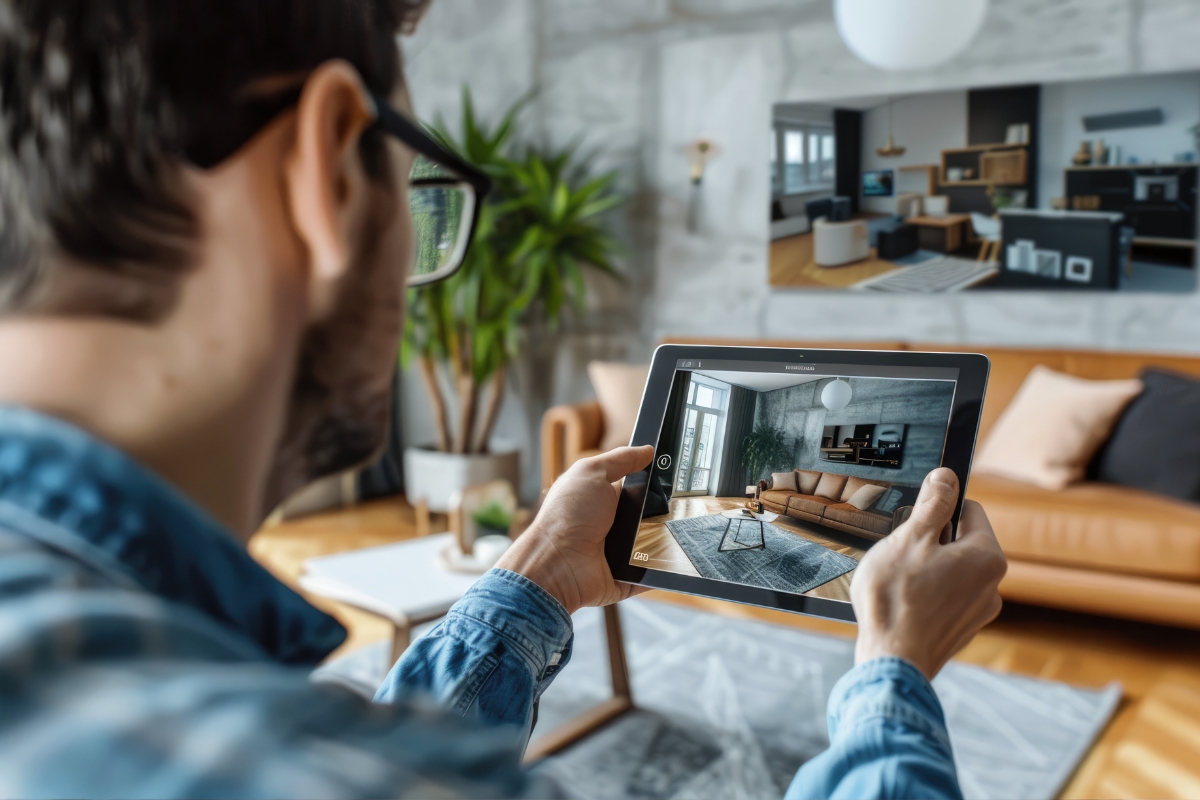
As augmented reality becomes a more prominent part of digital marketing strategies, tracking its effectiveness is critical. Unlike traditional ads, AR campaigns offer immersive, interactive experiences that need to be evaluated with metrics tailored to user behavior and engagement. Understanding how to measure success helps brands refine their campaigns, justify their budgets, and deliver more impactful experiences over time.
Defining Key Performance Indicators for Next-Gen AR Marketing
To properly evaluate an AR campaign, it’s important to define relevant performance metrics at the outset. Engagement metrics such as time spent within an AR experience, number of interactions, and completion rates give insight into how users are responding. Conversion rates, click-throughs from AR prompts, and post-engagement actions help gauge the effectiveness of the campaign in driving desired behavior. Customer feedback, both qualitative and survey-based, can provide valuable insight into how memorable or useful users found the experience.
More advanced metrics are also becoming common. Heat maps and interaction analytics, for example, help brands understand which elements of the AR interface are most engaging. These data points can be used to refine future experiences and ensure that marketing goals align with user expectations.
Advanced Analytics for Tracking Augmented Reality Engagement
The growing use of real-time analytics has changed how marketers assess campaign performance. Technologies like eye-tracking, gesture recognition, and spatial mapping help paint a clearer picture of how users interact with AR content. These insights go beyond clicks and views—they show where people focus their attention and how they physically respond to digital overlays. By combining this data with broader performance indicators like traffic patterns and on-site behavior, brands can see how AR fits into the overall customer journey. This allows for smarter adjustments to messaging, visuals, and campaign timing.
Calculating the Return on Investment for AR Initiatives
Understanding the return on investment (ROI) in AR marketing involves more than just tracking sales. It requires measuring the full impact of the campaign across multiple touchpoints. Sales data, engagement metrics, brand recall, and customer sentiment all contribute to a clearer ROI picture. Multi-touch attribution models are particularly useful here. They help identify how AR experiences influence consumer decisions over time, even if the purchase happens later or on a different platform. These models also help determine whether the investment in AR is driving repeat business, increasing basket size, or encouraging customers to spend more time with the brand.
Attributing Sales and Conversions to Augmented Reality Efforts
As AR becomes more integrated with eCommerce and retail environments, the ability to connect AR interactions directly to sales is improving. Features like embedded purchase options within AR experiences or QR code tracking allow marketers to link specific engagements with conversion events. Offline sales can also be connected through loyalty programs, app-based check-ins, or in-store redemption of AR-based promotions. These connections make it easier to prove the value of AR beyond digital impressions and give brands more control over their attribution modeling.
Future Tools for Assessing Augmented Reality Campaign Effectiveness
New tools are on the horizon that will further improve how AR marketing performance is measured. These include AI-driven platforms that predict campaign success based on live performance data, visual dashboards that provide real-time insights, and enhanced customer journey tracking that links AR interactions with long-term behavior. The future of AR analytics will involve a blend of automation, data science, and creative insight. The more detailed and accurate the tracking becomes, the better brands will be at adapting campaigns quickly and staying aligned with consumer expectations.
Overcoming Implementation Challenges for Advanced Augmented Reality

Advanced augmented reality (AR) offers exciting opportunities for marketing, but implementing these technologies isn’t without its challenges. High development costs, technical limitations, user experience concerns, and data privacy risks are all hurdles that brands must address to build successful AR campaigns.
Addressing the Costs of Sophisticated Augmented Reality Development
One of the primary obstacles to launching advanced AR campaigns is cost. Building interactive, immersive experiences often requires a combination of skilled developers, advanced hardware, and a reliable platform to support performance across devices. While these expenses were once prohibitive for many brands, the technology has become more accessible in recent years. Businesses can now start with smaller pilot projects to test ideas and refine user experiences before committing to full-scale campaigns. This phased approach helps control costs while allowing room for experimentation and feedback.
As AR development platforms improve and become more intuitive, companies also gain the ability to manage more aspects of the process in-house, reducing reliance on external vendors. Over time, this shift helps drive down long-term costs and speeds up the deployment cycle.
Bridging the Technology and Skills Gap for AR Marketing
Even with better tools, many marketing teams lack the technical skills needed to build and manage AR campaigns. From 3D modeling and animation to data integration and testing, AR requires a different set of capabilities than traditional digital marketing. Addressing this gap means investing in training or hiring new team members with the right expertise. Collaboration between marketing, IT, and creative departments is also key to bringing AR ideas to life in a cohesive and user-friendly way. In some cases, outsourcing complex builds to specialists can help accelerate learning and keep early-stage campaigns on track while internal teams grow their capabilities.
Ensuring Seamless User Experience Across AR Platforms
The success of any AR campaign hinges on the user experience. Clunky interfaces, lagging visuals, or inconsistent performance across devices will quickly discourage engagement. Whether the experience is delivered through a mobile app, a browser, or smart glasses, it must feel intuitive and stable. This means thorough testing is essential across platforms, operating systems, and device types. Load times, interface design, and user flow should be optimized to ensure that people can interact with the AR content easily and naturally. The more seamless the experience, the more likely users are to stay engaged and return in the future.
Managing Data Privacy and Security in Future AR
As AR experiences become more advanced, they often collect large volumes of data—ranging from location information to behavioral insights. This raises important questions about privacy and security. Consumers are increasingly aware of how their data is used, and brands that fail to protect that information risk damaging trust. To meet evolving regulations and expectations, companies must implement strong data governance practices. This includes securing data storage, being transparent about data collection, and ensuring that users have control over what information is shared. Privacy policies must be clear and accessible, and compliance should be monitored regularly.
Strategies for Wider Consumer Adoption of Augmented Reality
For AR to become a standard part of the marketing mix, it must deliver clear value to everyday users. Consumers are more likely to engage with AR when it enhances their shopping experience, saves them time, or helps them make more confident decisions. Making AR accessible through web browsers or existing apps, rather than requiring new downloads, can reduce barriers to entry. Clear instructions, responsive design, and fast load times help ensure a positive first impression. Demonstrating practical applications—such as trying on products virtually, previewing home decor, or accessing personalized promotions—makes AR more useful and relevant.
In the coming years, AR’s success will depend on how well brands overcome these challenges. Those that invest in usability, data protection, and scalable development models will be best positioned to unlock the full potential of this technology and deliver experiences that consumers actually want to use.
Ethical Considerations for the Next Era of Augmented Reality Marketing

As augmented reality (AR) becomes more embedded in digital marketing, ethical considerations are becoming increasingly important. AR opens up new ways to connect with audiences through interactive experiences, but it also introduces questions around transparency, data collection, accessibility, and user trust. To move forward responsibly, marketers need to consider how AR campaigns affect users beyond the screen.
Ensuring Transparency in Augmented Reality Advertising
Transparency is key in any advertising medium, but it is especially important in AR, where digital elements are layered onto the real world. Users need to know when they’re interacting with an augmented experience, especially if that experience influences their behavior or purchasing decisions. Brands should clearly indicate when overlays or virtual enhancements are being used. This helps prevent confusion or manipulation and sets honest expectations with the audience. The more clearly users understand what is real and what is augmented, the more likely they are to trust the brand behind the content.
Protecting User Data and Privacy With Future AR
AR experiences often require access to sensitive user information, including location, camera use, and real-time behavior. With that access comes a responsibility to manage and protect the data carefully. Consent should be clear and specific, not buried in general terms and conditions. Users must know what data is being collected and how it will be used. Safeguards like encryption, anonymization, and limited data retention help reduce risks.
As data regulations continue to evolve, brands must stay informed and compliant with frameworks such as GDPR and CCPA to avoid legal issues and build consumer confidence. Maintaining digital infrastructure with proper security protocols also plays a role in privacy. Brands must ensure that their websites, apps, and AR platforms are secure and regularly monitored for vulnerabilities.
Promoting Inclusivity and Accessibility in AR Design
To be truly effective, AR marketing needs to be inclusive. That means designing experiences that are usable by people with a range of physical abilities and varying levels of technological access. Unfortunately, many AR tools currently assume access to the latest devices or a fully functional sense of sight, sound, and mobility. Brands should aim to create experiences with adjustable text, screen reader compatibility, voice-command functionality, and options for lower-spec devices. Building with accessibility in mind from the start not only broadens your audience but also demonstrates a commitment to equity and responsible design.
Avoiding Deceptive Practices in Augmented Reality Experiences
With AR’s ability to seamlessly blend digital content into real-world environments, the line between advertising and reality can blur. This can make it tempting to exaggerate features or create overly idealized versions of products. Marketers should resist the urge to mislead. Visual enhancements should not disguise a product’s limitations, and interactive demos should reflect actual functionality. When users discover that an experience was unrealistic or manipulative, it can seriously damage a brand’s credibility. Ethical AR marketing starts with a commitment to honesty, even when the technology makes it easy to go beyond what’s real.
Establishing Responsible Development Frameworks for AR Marketing
As AR becomes a bigger part of marketing strategies, companies should take steps to build ethical guidelines into their development process. This includes creating internal standards for data usage, transparency, accessibility, and truthful content. Collaboration across departments—from marketing to legal to UX—is essential for spotting potential risks and reinforcing ethical boundaries.
Industry-wide conversations will also play a role. As more companies adopt AR, shared frameworks and best practices can help shape the future of responsible digital engagement. This includes sharing case studies, participating in regulatory discussions, and supporting technology standards that prioritize the user’s well-being.
Integrating Augmented Reality With Other Emerging Marketing Technologies
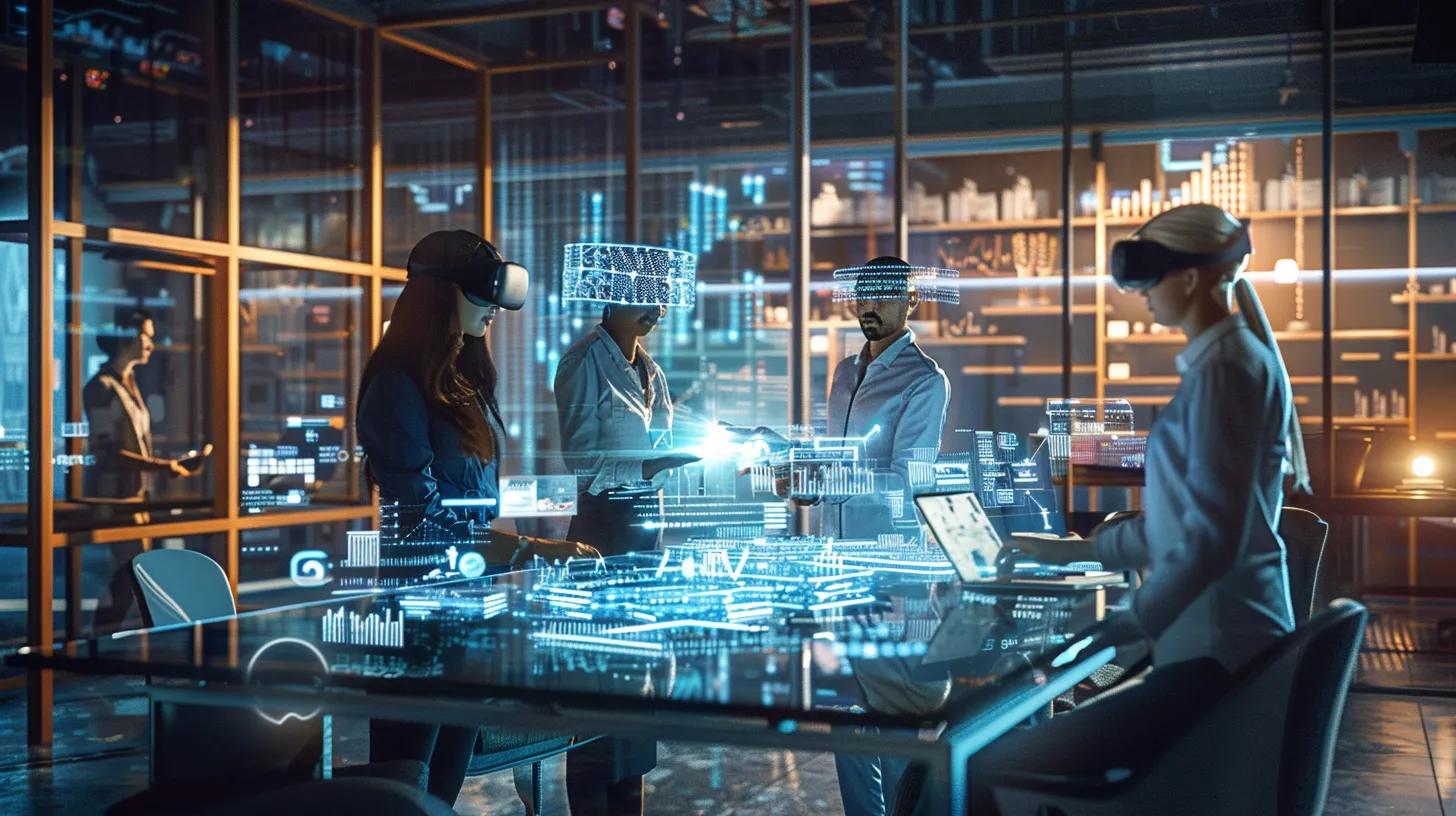
As augmented reality continues to evolve, its integration with other emerging technologies is shaping the future of digital marketing. When AR is combined with tools like artificial intelligence (AI), the Internet of Things (IoT), virtual reality (VR), blockchain, and advanced user interfaces, the result is a more seamless and immersive experience for users. These combinations not only elevate engagement but also allow brands to offer more relevant, data-driven, and interactive campaigns.
The Synergy of Augmented Reality and Artificial Intelligence in Future Campaigns
Pairing AR with AI opens the door to personalized, real-time marketing. AI systems can analyze user behavior, preferences, and past interactions to guide what AR content is shown, when, and how. For example, a customer browsing a product in an AR interface could receive suggestions tailored to their style, based on previous browsing history. The integration of AI also supports predictive content delivery, which helps streamline the customer journey by anticipating what a user might need next. This kind of responsiveness not only improves user experience but also strengthens a brand’s ability to convert interest into action.
Augmented Reality and Internet of Things (IoT) for Contextual Experiences
When AR works alongside IoT devices, marketers can create more responsive and context-aware experiences. Sensors placed in physical locations, such as retail stores or event venues, can detect when a customer is nearby and trigger relevant AR content. This might include personalized discounts, product tutorials, or in-store navigation assistance. These experiences are driven by real-world conditions, such as time of day, location, or user proximity, making the content feel more timely and helpful. As IoT infrastructure becomes more common, expect to see more brands using AR to enhance in-person experiences with digital interactions.
Combining Augmented Reality With Virtual Reality for Immersive Branding
While AR adds digital elements to real environments, VR creates entirely virtual spaces. When combined, they provide a flexible range of user experiences that can meet different needs. For instance, a retail brand might use AR to let users visualize furniture in their homes, while VR can transport them into a fully designed showroom. This blend of technologies is especially powerful in industries such as real estate, automotive, and tourism, where immersion and visualization drive decision-making. The ability to shift between the real world and a fully immersive digital environment gives marketers more ways to communicate value and build stronger brand narratives.
The Role of Blockchain in Future Augmented Reality Marketing Trust
Blockchain is gaining traction as a tool to increase transparency and protect data. In AR marketing, it can be used to verify the authenticity of digital content or secure user data during interactions. For example, a limited-edition digital product displayed through AR could be verified via a blockchain ledger, confirming its originality. Additionally, blockchain can help ensure that users retain control over their personal data, which is increasingly important as AR applications gather more information from their surroundings. Brands that adopt blockchain-supported AR tools may be better positioned to earn consumer trust.
Voice Control and Gesture Recognition in Next-Gen AR Interactions
One of the biggest hurdles for AR adoption has been user interface design. Advances in voice control and gesture recognition are helping to simplify how users interact with AR content. Instead of relying on screen taps or external controllers, users can now use natural movements or voice commands to explore AR environments. This makes experiences more intuitive and accessible, lowering the barrier for participation and allowing for a broader audience. Whether guiding users through a product demo or helping them navigate a virtual environment, these controls are making AR more seamless and effective.
Preparing Your Brand for the Augmented Reality Marketing Revolution

As augmented reality becomes more mainstream in digital marketing, brands need to be proactive about how they adapt. The shift toward AR-enhanced campaigns is more than just a technological trend. It requires a change in mindset, strategy, and operations. Companies that are prepared to evolve quickly will be in a better position to connect with consumers, offer memorable experiences, and remain competitive in a changing digital landscape.
Developing an Agile Strategy for Future Augmented Reality Adoption
Adopting augmented reality into a marketing plan means staying flexible. This is not a one-time change but an ongoing process of testing, learning, and refining. Brands that succeed with AR often rely on small teams that can move quickly and make decisions without excessive red tape. Rather than waiting for a perfect rollout, the focus should be on experimenting, gathering feedback, and adapting based on real-world results. This agile approach allows teams to align AR tools and creative campaigns with actual business goals, like improving engagement, driving sales, or expanding reach.
Training Marketing Teams for Upcoming Augmented Reality Tools
Technology is only useful if your team knows how to use it. As AR tools evolve, marketing departments will need training to understand how to design and deploy effective campaigns. This may include learning new software platforms, gaining a better understanding of user experience design, or experimenting with interactive storytelling techniques. In-house workshops, certification programs, and practical exercises can help teams become comfortable with emerging tools. The more hands-on experience marketers have, the more likely they are to create campaigns that feel polished and meaningful rather than gimmicky.
Fostering a Culture of Innovation for AR Marketing Success
Creating a space where teams are encouraged to test new ideas is essential to long-term AR success. A culture that values experimentation over perfection is more likely to produce innovative results. Leadership plays a key role here—setting the tone, encouraging creative risk-taking, and framing missteps as part of the learning process. Teams should feel empowered to suggest new approaches, explore different technologies, and look beyond traditional marketing methods. This kind of forward-thinking culture helps organizations stay ready to evolve with whatever comes next.
Identifying Pilot Projects for Testing Advanced Augmented Reality
Before going all in on a large AR campaign, it is often smarter to start with a smaller pilot project. These limited-scope experiments can help test creative ideas, uncover technical challenges, and evaluate audience response. For instance, a brand might test an AR product preview on a small segment of its website or create a short interactive experience for an event. These small-scale tests offer a chance to fine-tune content, simplify user flows, and better understand what customers actually find useful. The lessons learned from pilot projects are crucial when scaling efforts later on.
Staying Ahead of Competitors in Augmented Reality Marketing
AR is evolving rapidly, and so are the expectations of digital audiences. Brands that treat AR as a short-term campaign tool may miss the bigger picture. Staying ahead in this space requires constant awareness of what’s changing—whether it’s updates in AR hardware, shifts in consumer behavior, or advances in content platforms. Regularly revisiting strategy, tracking engagement metrics, and analyzing competitor activity help ensure your brand does not fall behind. The companies that succeed with AR will be those that keep evolving, stay close to their audience’s needs, and invest in both people and platforms to support long-term innovation.
Final Thoughts
As AR continues to blur the lines between digital and physical experiences, forward-thinking brands that embrace this technology today will stand out tomorrow. Whether you’re exploring virtual try-ons, interactive product demos, or location-based storytelling, Newman Web Solutions has the expertise to integrate AR seamlessly into your digital marketing strategy. Call us at (404) 301-9189 or schedule your free 30-minute strategy session to start crafting immersive campaigns that captivate and convert. Let’s bring your audience’s world—and your brand—to life with the power of augmented reality!





